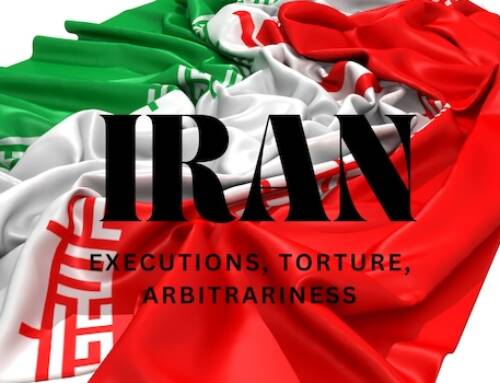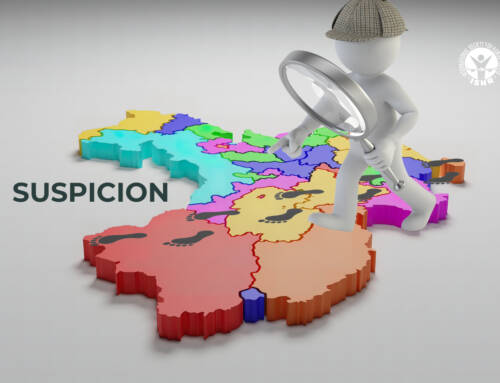Transhumanism

What does Transhumanism Mean for Human Rights?
The ancient story of Icarus vividly shows us what happens when technology develops faster than ethics. It teaches us, what happens when strong technology meets a weak human spirit and when more is possible technologically than humans can control and master in a good and healthy way. Icarus’ father paved the way for this with his wealth of ideas:
“Daedalus said it and, directing his mind to new inventions, he cleverly changed nature.” (Source)
Changing the weak, limited nature of man in order to make the impossible possible – this has always been the dream and aspiration of transhumanism (Latin “trans”: ‘beyond, above’ and “humanus”: ‘human’). At the end of January this year, a significant milestone was reached in this particular field of research: for the first time, a so-called brain-computer interface was implanted in a human being. The 29-year-old American Noland Arbaugh, who had been paraplegic since a diving accident, became world-famous overnight as “patient zero” of the US neurotechnology company Neuralink, part of Elon Musk’s corporate empire, when his identity was announced in a livestream on the X platform on March 20. He moved a computer cursor with his thoughts alone and played chess on the screen for the whole world to see. Although he admitted that the technology was not yet perfectly developed, he said it improved his quality of life enormously.
For some, news like this, which heralds the age of the fusion of man and machine, is scary. Others, however, celebrate technological progress and the opportunities it could bring to improve the lives of millions of people around the world in different forms and intensities in the future. For the ISHR as a human rights organization, the question arises as to what human rights implications arise from the increasingly realized transhumanist dream.
To this end, it is first necessary to describe what exactly transhumanism is. There is a lot to say about the history of ideas and technology, because the term and the concepts behind it are not new. However, it is only today that the practical effects of transhumanism associated with new technologies are really coming to the fore as a result of technological progress. Four key technologies are usually mentioned in this context, which can be abbreviated with the acronym GRIN: Genetic engineering, Robotics, Artificial Intelligence and Nanotechnology. (See Paul Cullen (2023) Transhumanismus, was ist das?, In: Erschaffen wir den Menschen neu? Transhumanismus aus christlicher Perspektive, Gustav-Siewerth-Akademie (Hrsg.), Fe-Medienverlags GmbH.)
The aim of transhumanist research and development is to enable humans who are susceptible to illness, mortal and forgetful to outgrow themselves and to create an improved version of themselves using technology. Accordingly, “human enhancement” or “humanity+” (the brand name of the former “World Transhumanist Association” since 2004) are often used as synonyms for transhumanism.
From a human rights perspective, a number of critical questions must be asked about transhumanism, which are of an ethical, legal, political and practical nature. Three of these will be discussed briefly in this article:
1. To what extent does transhumanism pose a challenge to our order?
To date, all living and working systems worldwide have been designed and constructed in such a way that they organize, structure and enable people to live together. Humans interact with humans. Accordingly, decisions about this interaction are also made by humans. In competitive sport, humans also deal with themselves. Humans measure themselves against humans. And in education, a human mind is formed and receives an educational qualification to verify the level of development it has reached. What sounds so self-evident must be re-emphasized in this simplicity and clarity in times of transhumanism, as all these familiar forms of our life order could become more differentiated and complex in the future through the mixing of man and machine.
2. To what extent does transhumanism pose a challenge to our law?
In terms of the history of ideas, the law that exists and is valid in many countries around the globe in our times originates from natural law. Because someone is human, they have rights. Because someone is human, they are a person before the law. Because someone is human, they have an inalienable, non-negotiable and inviolable dignity. But what if the question ‘Who actually is human?’ has to be asked in the future? At what level of humanity does a hybrid of human and machine acquire legal personality and thus become a bearer of rights? Point 7 of the “Transhumanist Declaration”, which has been in force since 2009, states:
“We advocate the well-being of all sentience, including humans, non-human animals, and any future artificial intellects, modified life forms, or other intelligences to which technological and scientific advance may give rise.” (Source: The Transhumanist Declaration)
3. To what extent does transhumanism pose a challenge to our ethics?
Traditionally, intervention in the human body by means of surgery, medication and prostheses is intended to contribute to healing – i.e. to improving a deficient state towards a normal state. Transhumanism proposes moving away from this focus on healing and developing medicine to improve human characteristics and conditions as such – i.e. enhancement. The aim is to achieve a superhuman increase in performance and resilience – a body and mind that no longer fall ill, no longer age and ideally are able to accomplish things that nature did not intend. Daedalus sends his regards. And once again the ethical question arises: is everything that is technically possible also morally good?
In the year of Neuralink’s “Patient Zero”, opinions differ as to whether the growing hype surrounding transhumanism is simply clever marketing by some of the world’s major technology companies, or whether we are really dealing with a fundamental transition to a new human age. The market power of some of the world’s richest and most influential corporations, which naturally want to sell the expensively developed technologies and earn money with them, speaks in favor of the former. It has always been useful for good marketing to create a story that is bigger than the product itself and that triggers the greatest possible product euphoria and desire to buy by skillfully playing on the emotions of the target customers of technological implants, artificial intelligence applications and robotics solutions.
A fundamental transition to a new human age, on the other hand, is supported by a perceptible change in narratives that goes beyond the spheres of the industrial and consumer goods economy. The question of whether we are currently experiencing the transition to a new, utopian paradigm must be seriously and thoroughly examined. One approach to this line of thought is the consideration that every powerful idea for shaping the world always emerges as a mixture of utopia and dystopia. Two questions are crucial here: “What is the best possible scenario?” (utopia) and “What is the worst thing that can happen?” (dystopia). Currently, in the transhumanist debate, utopias of a future worth living for all people are used as justification and legitimization for researching and experimenting with the blending of humans with the above-mentioned key technologies, as are dystopias of the complete takeover of all human spheres of existence and activity by artificial intelligence.
The emergence of a new narrative from the interplay of utopia and dystopia is nothing new. The last powerful (and still valid) narrative to emerge in this way was that of “Sustainable Life on Earth”. It juxtaposes the optimism of achieving fair, efficient and perpetual management of natural resources through global cooperation on an equal footing with the pessimism that the unstoppable triple planetary crisis (climate crisis, waste crisis and biodiversity crisis) is crossing tipping points that will sooner or later destroy the planet. In the same sense, the quest for universally valid human rights is a comparable narrative, which in its genesis (see the preamble to the Universal Declaration of Human Rights) contrasts the utopia of “friendly relations between nations” with the dystopia of “acts of barbarism which fill the conscience of mankind with indignation”, to which the non-recognition and contempt for human rights have led.
What at first sounds like an interesting academic exercise to scientifically prove and describe this “utopian paradigm shift” has an extremely relevant practical side. For it is characteristic of a new narrative that it not only questions the concepts, logic, conventions, mechanisms, arguments and self-evident truths and premises of the old narrative, but also replaces it over time. At this point, it is no longer decisive which human rights questions are posed to transhumanism. For human rights will have been replaced as a framework of interpretation and reference by a new framework into which reality will have to fit. Nobody can wish for such a world.
And this makes it clear: as human rights activists in this current age, we are well advised to take a very close look at the question of what transhumanism means for human rights.
Matthias K. Boehning
ISHR Secretary General





